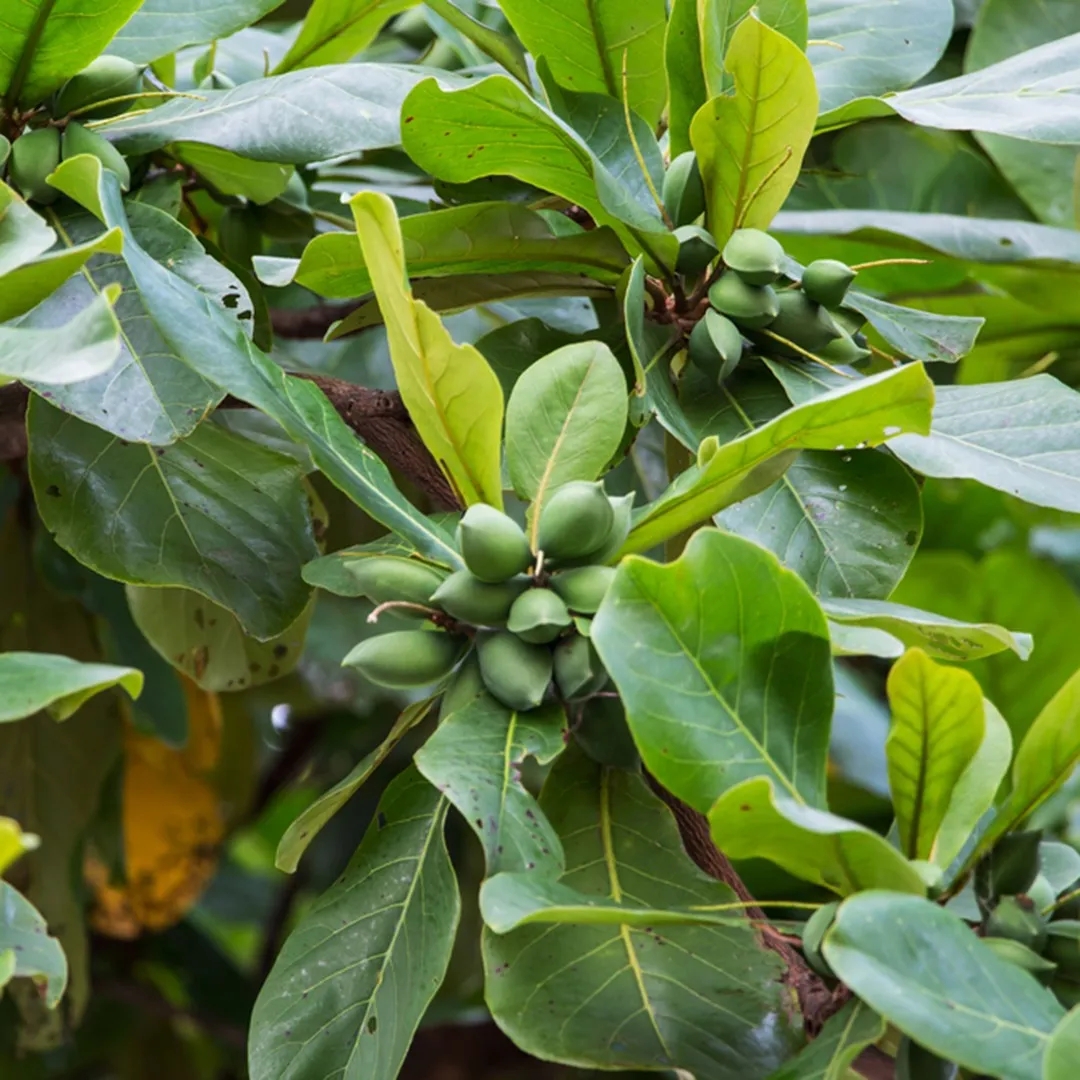Terminalia catappa L.
• Scientific Name: Terminalia catappa L.
• Family: Combretaceae
• Common Name: Indian Almond, Tropical Almond, Malabar Almond
• Malayalam Name: Badam, Thalli-thenga, ബദാം, തല്ലിത്തേങ്ങ
• Tamil Name: Naatu Vaadhumai (நாட்டு வாதுமை) மஞ்சள் புளியாசி (Manjal Puliyasi), தண்டுபட்டை (Thandupattai)
Synonyms:
• Terminalia catappa has been referred to by several synonyms in botanical literature:- Combretum catappa L., Terminalia indica (Willd.), Terminalia occidentalis L.
________________________________________
Description:
Terminalia catappa, commonly known as the Indian Almond or Tropical Almond, is a large deciduous tree native to tropical regions of Asia, Africa, and the Pacific Islands. The tree is recognized for its wide, spreading canopy and large, oblong leaves that turn vibrant red or yellow before falling in the dry season. The tree produces small, white or pink flowers that develop into a fruit resembling an almond, which has a hard shell and edible kernel inside. The leaves, fruit, seeds, and bark of the tree are all used in traditional medicine.
________________________________________
Medicinal Uses:
1. Anti-inflammatory:
o Terminalia catappa is traditionally used for reducing inflammation. The leaves and bark are often applied to treat inflammatory conditions like arthritis, wounds, and joint pain.
2. Antioxidant:
o The leaves, seeds, and fruit of Terminalia catappa are rich in antioxidants, which help neutralize free radicals and protect cells from oxidative damage, supporting overall health.
3. Antibacterial and Antifungal:
o Extracts from the leaves and bark have demonstrated antibacterial and antifungal activity. The plant is used to treat a variety of skin infections, wounds, and fungal conditions.
4. Wound Healing:
o The leaves and bark are used in traditional medicine to promote wound healing. The leaves are often applied to cuts, bruises, and burns for their soothing and healing properties.
5. Liver Health:
o Terminalia catappa is known to support liver function and is used in detoxifying treatments. The seeds and bark have hepatoprotective properties and are used in treating liver disorders.
6. Digestive Health:
o The seeds and leaves are used in traditional medicine to treat indigestion, diarrhea, and dysentery. They are also known to have mild laxative effects.
7. Skin Health:
o The leaves and fruit are used to treat various skin conditions, including rashes and eczema. They are also used in hair care to prevent dandruff and promote scalp health.

